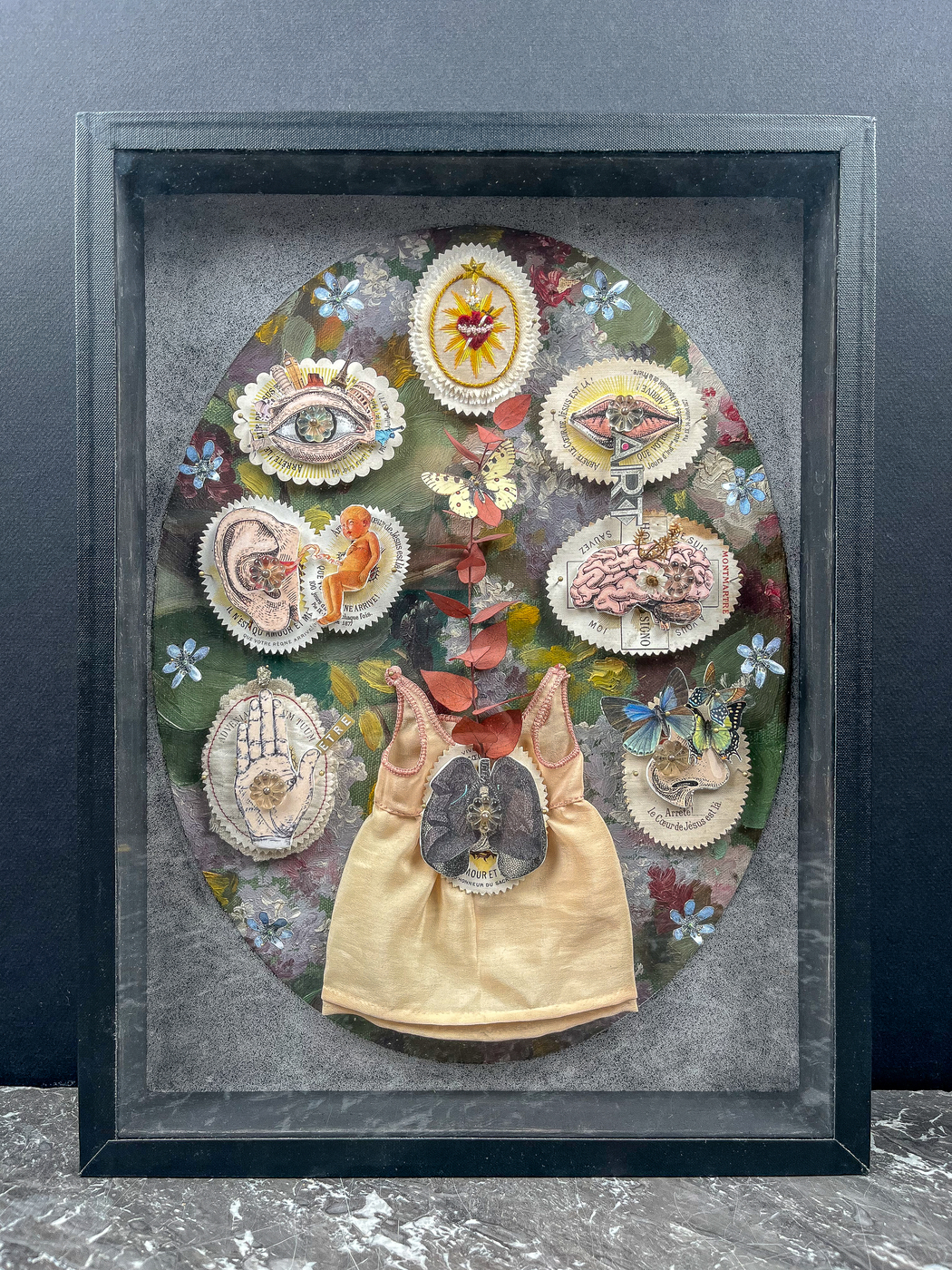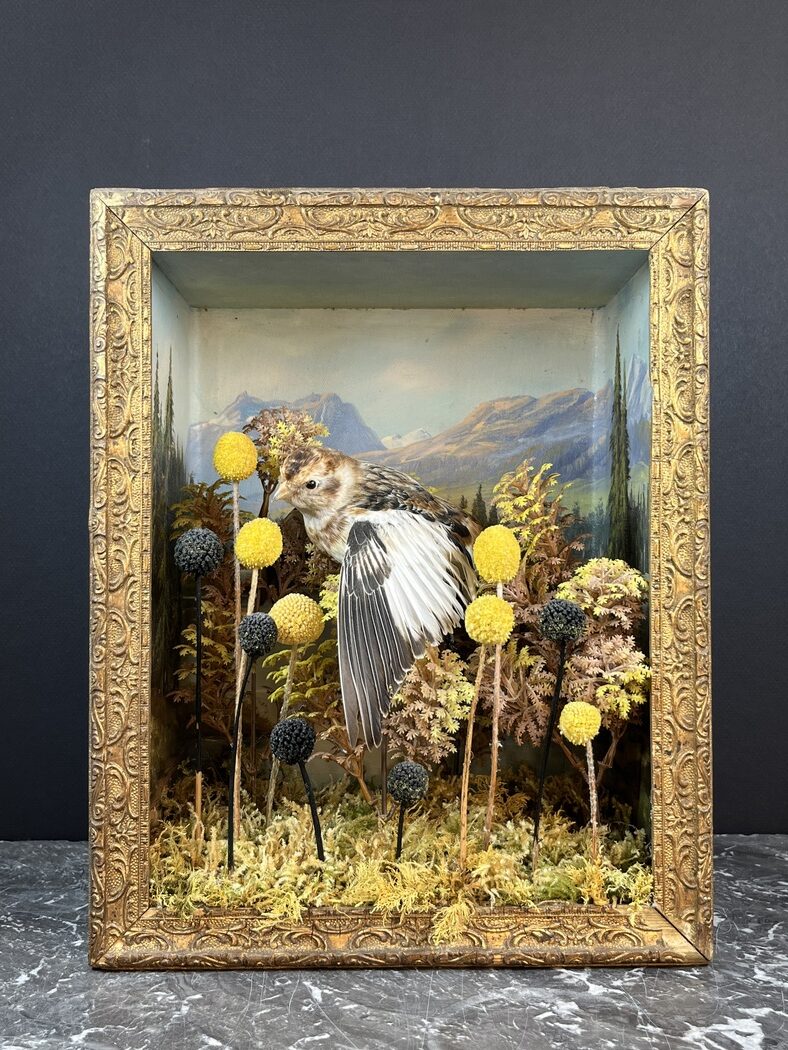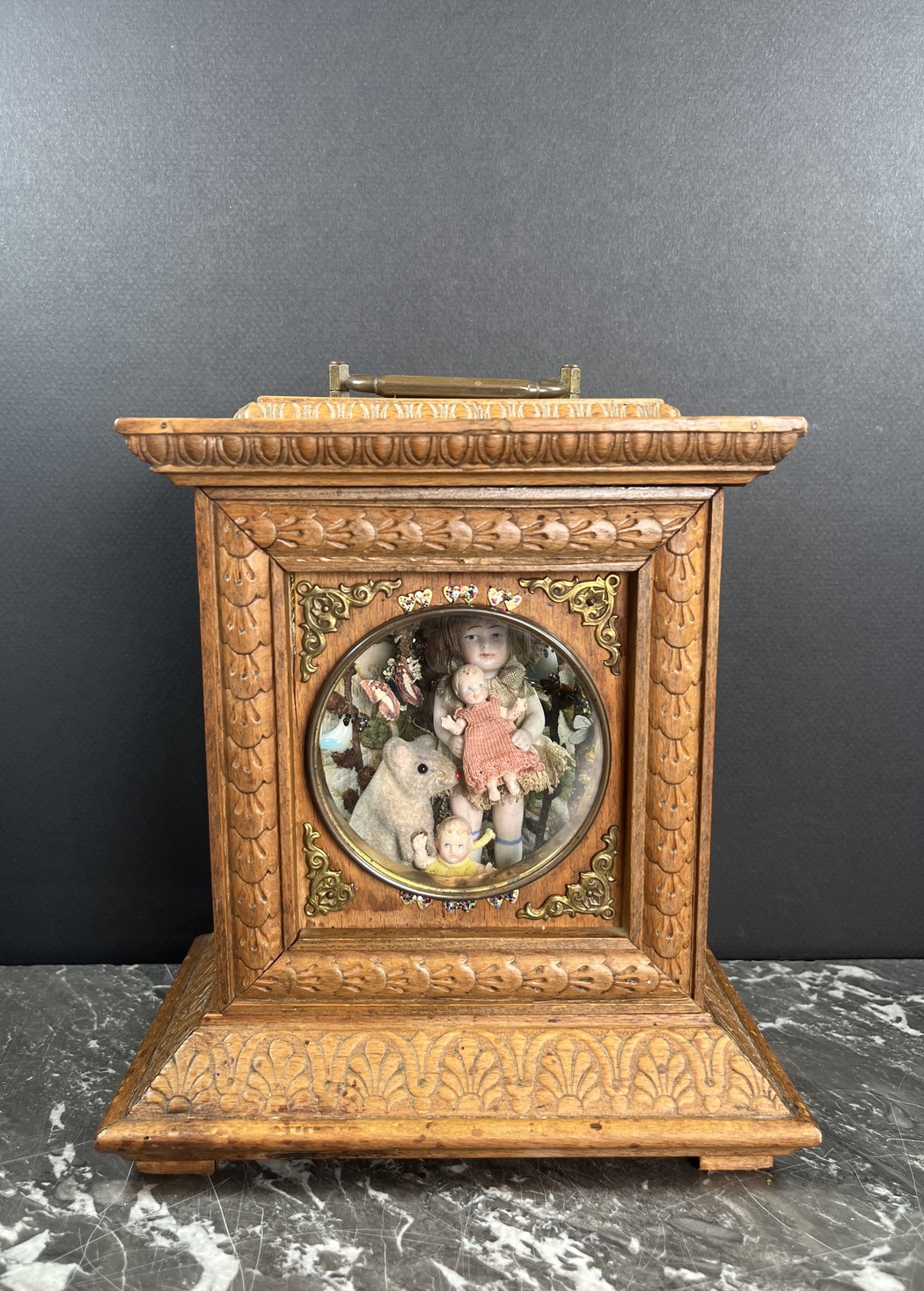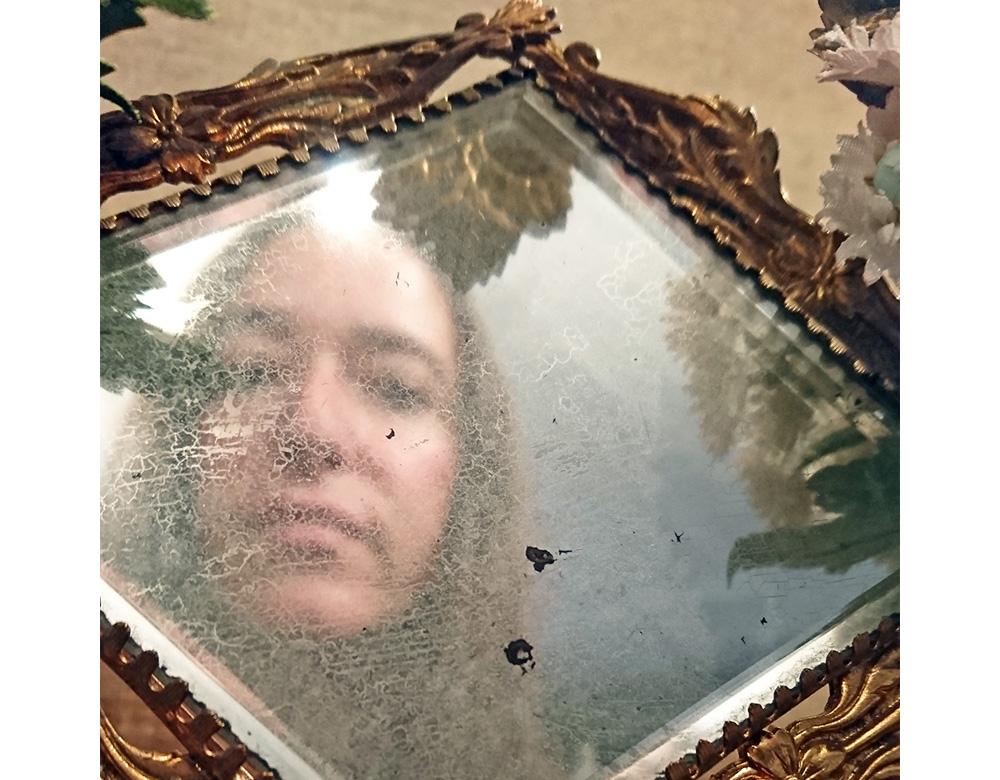Marion Laurent
Your work seems to focus strongly on the theme of memory. Could you tell us more about how your childhood experiences with heirlooms and stories have shaped your artistic vision?
Memory is an essential raw material in my work. Ever since childhood, I’ve been fascinated by the objects around us, especially those that bore a trace of the past: timeworn furniture, yellowed photos, everyday objects charged with an invisible presence. Everything seemed to me to contain a buried history, an imprint left by those who had touched it, loved it, forgotten it.
This sensitivity to memory naturally led me to explore how objects, materials, and forms can become capsules of memories and emotions. My work seeks to bring out these resonances, to give things a voice again, and to question our own relationship with time and oblivion.
In your creations, you give new life to forgotten objects. How do you choose these objects and what draws you to them?
The objects I incorporate into my work choose me as much as I choose them. There’s always a moment of encounter, an intuition. I’m drawn to things that carry a silent history, things that bear witness to the passage of time: a patina, a crack, wear and tear. I like modest, sometimes abandoned objects that have lost their function but retain a latent memory.
My choice is also based on the emotional and symbolic charge of the materials. Certain objects immediately evoke a human presence or a collective memory. By hijacking them and assembling them differently, I seek to reveal what lies dormant within them and give them a new existence in a poetic dialogue with the viewer.
 Marion Laurent | Self-portrait
Marion Laurent | Self-portrait
Your assemblages and installations invite viewers to introspect. What do you hope people will take away from your work?
I hope my work evokes a kind of reminiscence, an intimate echo in those who look at it. I’m not trying to impose a single reading, but rather to open up spaces of perception where everyone can project their own memories, emotions, and questioning.
If my works succeed in provoking a reconnection, a gentle disturbance, or a feeling of belonging to a collective memory, then they have achieved their goal. What interests me is this vibration between the intimate and the universal, this way in which a detail, a fragment, can awaken something buried within us.
The concept of “symbiosis between man and the living” is at the heart of your practice. Can you explain how you integrate this idea into your art, particularly through the interaction between human and animal figures?
I see the relationship between man and the living as a continuity, an ongoing conversation. My work explores these invisible links between beings, materials, and energies. The human and animal figures I include in my work are not there to illustrate an opposition but rather to evoke a dialogue, an interpenetration.
The organic textures and raw or altered materials I use recall the porosity between the human and the natural, between the body and the environment. At times, my sculptures and installations seem to suggest metamorphoses, subtle hybridizations, as if the boundaries between man, animal, and plant were gradually disappearing. It’s this notion of passage, of transformation, that fascinates me.
 Marion Laurent | Flight
Marion Laurent | Flight
How do you balance the intersection of the tangible and the intangible in your work, particularly when you’re working with antique objects that carry a sense of history?
I play with this duality by giving a physical presence to the invisible. The objects I integrate are charged with experience, but what interests me is the way they resonate beyond their materiality.
The intangible translates into absences, voids, and traces. I like to work with suggestion: an imprint left on a fabric, a projected shadow, a worn surface that recounts a past contact. These elements reveal what is no longer there, what has disappeared but persists in another way. It’s this tension between matter and memory, between the visible and the forgotten, that gives my work its relief.
You speak of a world where art is a bridge between the visible and the invisible. Can you share with us your thoughts on how art can help us reconnect with deeper, almost mystical realities?
Art has this capacity to open doors to the unknown, to make us perceive what escapes language. It acts as a threshold between the tangible world and more subtle dimensions, be they spiritual, emotional, or memorial.
In my work, I try to create spaces where the viewer can feel this porosity between worlds. Aged materials, incongruous assemblages, plays on light and transparency are all ways of evoking these floating realities. I believe that art can reconnect us to buried perceptions, awakening a sensibility that moves away from the rational to touch something more instinctive, more essential.
 Marion Laurent | My Childhood Memories
Marion Laurent | My Childhood Memories
Your work is described as a “poetic transformation of the past.” Could you explain the role of narrative in your art and how it links the past and the present?
The narrative in my work is fragmentary, almost like a sensitive archaeology. I collect, assemble, and superimpose elements that together form an open-ended story, to be recomposed by the viewer.
The past is not static; it is constantly being reinterpreted. By giving a second life to forgotten objects, integrating them into installations or sculptures, I create bridges between different temporalities. I like the idea of each work as an enigma, a fragment of history in which the viewer becomes the reader or interpreter.
Poetry is born from these unlikely assemblages, from the tension between what has been and what is becoming. My work is a dialogue between memory and the present, between absence and reappearance, between the tangible and the dreamed.


Leave a Reply